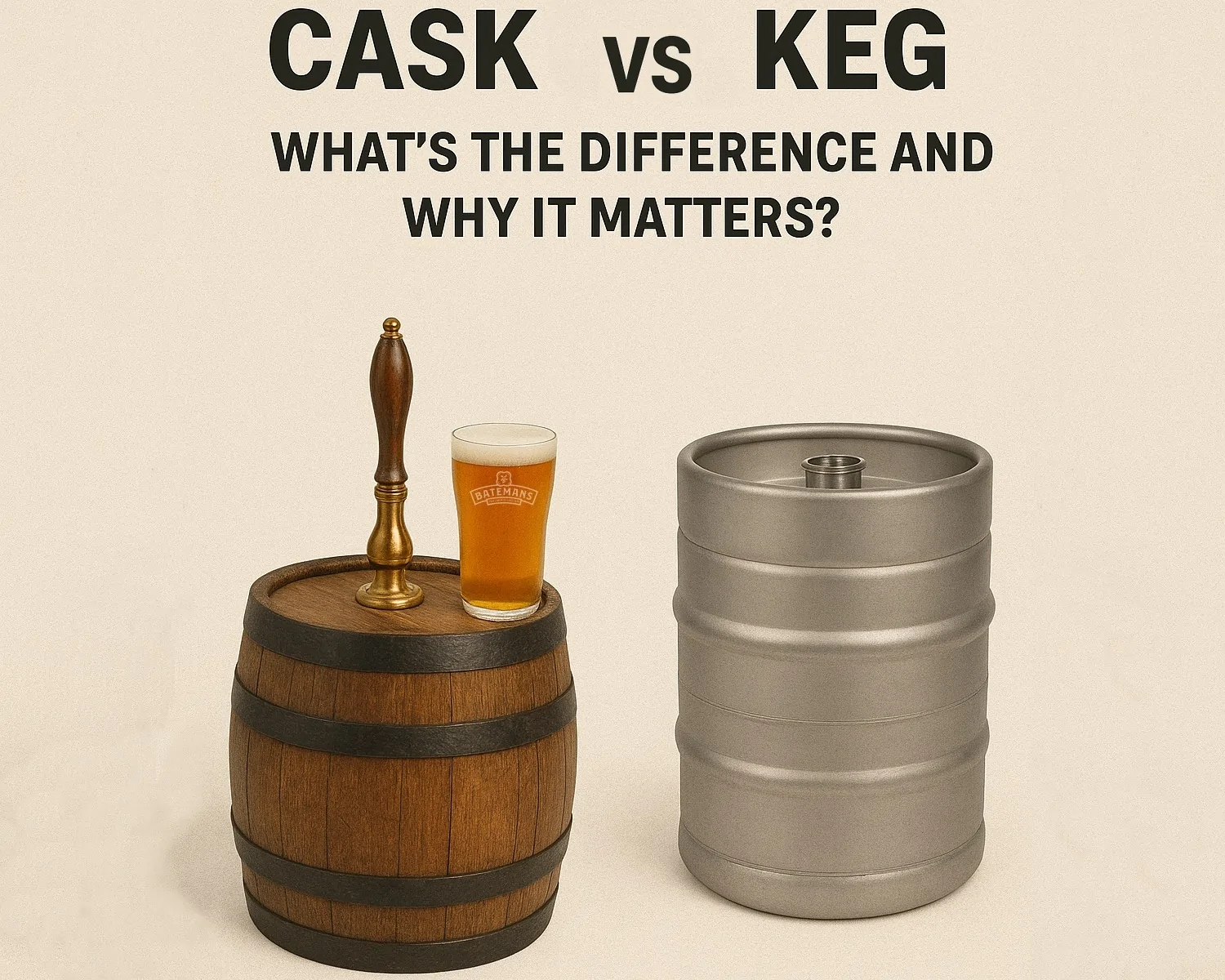When it comes to enjoying a pint, most beer lovers are familiar with the choice between cask and keg. But what sets them apart? Whether you prefer the tradition of a hand-pulled ale or the refreshing fizz of a keg pour, understanding the differences can help you appreciate the flavour, freshness, and care that go into every glass.
Let’s dive into the world of cask and keg beer, and what we choose to brew at Batemans Brewery.
What Is Cask Ale?
Cask ale, sometimes called “real ale,” is beer that continues to ferment in the cask it’s served from. It’s a live product – unfiltered, unpasteurised, and naturally conditioned. That means the carbonation occurs organically, rather than being added with gas.
Cask ale is served at cellar temperature (around 11-13°C) and traditionally poured using a hand-pump or gravity dispense. This slightly warmer temperature allows the full character of the beer to shine through, with subtle flavours and aromas that might be muted when served colder.
You’ll usually find cask ale in smaller 9-gallon casks, which means it’s best enjoyed fresh, typically within 3–5 days once tapped. But that short shelf life makes it special: it’s a beer evolving in the cask and meant to be enjoyed at its peak.
What Is Keg Beer?
Keg beer is stored and dispensed under pressure using CO₂ or a mix of CO₂ and nitrogen. It’s typically filtered and pasteurised, giving it a longer shelf life and a bright, polished clarity.
Because of the gas pressure, keg beer tends to be more carbonated, offering a crisper mouthfeel and lively bubbles, which many drinkers find especially refreshing on warm days. It’s also served colder, usually between 3-8°C, and lasts longer once opened, often up to 3-4 weeks depending on setup.
Thanks to its sealed environment and consistency, keg beer is an excellent fit for quieter venues, where beer might not move as quickly, and freshness needs to be preserved for longer.



